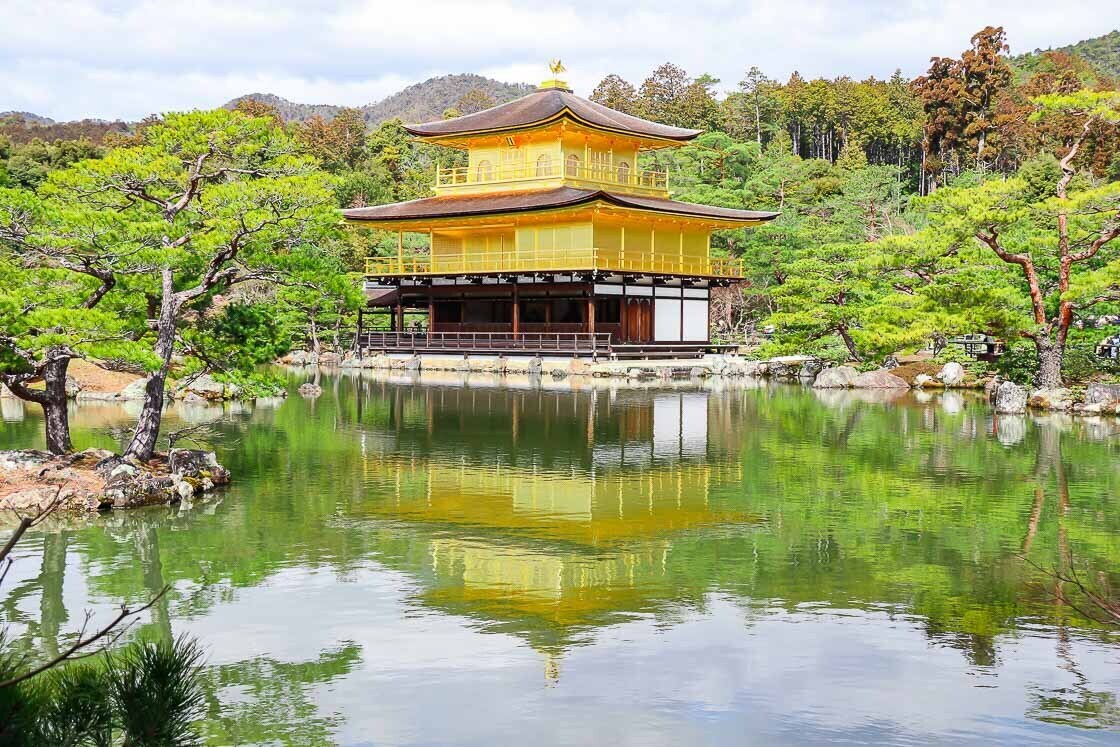Beginner’s guide to Kyoto: what to do and where to stay
Kyoto, the old capital of Japan, has long been a top travel destination for visitors to Japan. The city contains many well preserved historical sights compared to the other major urban cities of Tokyo and Osaka, and is a popular location for those who want to experience traditional culture. A single night is not enough to cover all of Kyoto's sights, and travelers would benefit more by staying for a few more nights.
As I only had enough time for an overnight trip, I opted to stay at a hotel in the city center, and had to be strategic in picking what to do and where to go. Below is my basic itinerary that is suitable for those short on time, but want to visit some popular sightseeing spots in Kyoto. During my short trip, I also participated in a geisha experience, which was the highlight of my trip. For those planning to visit in the summer, do not miss reading our suggested summer-only activities and festivals in Kyoto.
Those who want to follow this itinerary should book their accommodation through the official website. Booking directly from the official website of the accommodations outlined in this article ensures that you get the best and cheapest rate, and those who sign up as members will get an additional 10 percent off their reservations.


Eastern Kyoto: Kiyomizudera, Nishiki Market, Pontocho and Geisha experience
I started my trip at MONday Apart Premium Kyoto Station, my accommodation for the night. The hotel is an approximately 15 minute walk from Kyoto Station, but those with large suitcases can consider taking a taxi for convenience. Check-in typically starts from 15:00 and check-out is at 10:00, but staying guests are welcome to store their bags with the front desk before check-in, which was what I did.
The apartment-style hotel offers travelers a home away from home experience, in which spacious, self-contained rooms offer amenities like washer-dryer machines, fully equipped kitchens, refrigerators, microwave ovens and toasters. One special feature unique to my apartment hotel are the three sauna rooms that can be booked by staying guests for an hour each time to use on a private basis. I looked forward to relaxing in the sauna after a day of walking in Kyoto.





After dropping my luggage at the hotel, I took a bus to eastern Kyoto. First on my sightseeing list was Kiyomizudera, a temple with a wooden stage, and one of Kyoto's most visited sightseeing spot and a UNESCO World Heritage site. Founded in 778, the temple ground consists of several buildings and pagodas. The most eye-catching of all is Kiyomizudera's main hall and its a wooden stage, which juts out the front. The stage, which dates back to 1633, is supported by 18 wooden beams, each measuring about twelve meters long with a circumference of over two meters.
From Kiyomizudera, I walk back down the main approach and along the atmospheric Sannenzaka and Ninenzaka, two streets lined with shops and cafes housed in traditional buildings. The whole area has been preserved to maintain its look from the bygone years, which added to the atmosphere of the temple district.









My walk down from Kiyomizudera brought me to the famed Gion, a district known for its geisha and teahouses. The area has seen a marked increase in tourists over the last few years, and measures are currently underway to prevent tourists from affecting the everyday lives of those who work and live in the area. Visitors should respect the rules of not going close, touching or obstructing the geisha or littering. As I had already made a reservation for a geisha experience in the evening, I did not feel the need to linger too long in the Gion area.
The Gion district is at the fringe of downtown Kyoto, where the main shopping and dining areas are located. Nishiki Market, also known as Kyoto's kitchen, is located in the vicinity, and that was where I headed to get a feel of Kyoto cuisine. The market started off about 400 years ago as a fish market, and over the centuries, evolved to become Kyoto's premier kitchen offering visitors a variety of fresh produce and local specialties. I took the opportunity to pick up some produce and food to prepare as my accommodation was fully furnished with a kitchen.







Kyoto is a well-known place to see geisha, and Gion in downtown Kyoto is the city's leading geisha district containing teahouses and restaurants where geisha work. In Kyoto, a geisha apprentice is called a maiko, while geiko is the term used for a fully fledged geisha. Participating in a geisha experience, in which visitors meet with a Kyoto geisha, is available through a number of companies, and experiences come with varying levels of exclusivity.
My geisha experience by AN KYOTO Japanese Culture Experience was booked as part of my accommodation plan at hotel MONday Apart Premium Kyoto Station. The geisha experience is also sold as part of the accommodation plans at two other hotels - hotel MONday Karasuma Nijo and hotel MONday Marutamachi - both operated by the same group as the one I stayed at.
Held in the evening with a maiko, the experience consisted of three segments: a tea ceremony, a question and answer segment, and taking commemorative pictures with the maiko. It was my first time to meet with a Kyoto maiko, and I appreciated the on-site translator, who facilitated communication between the maiko and non-Japanese speaking participants.

(Picture taken with the cooperation of AN KYOTO Japanese Culture Experience)


After the geisha experience, I went for a stroll and dinner through Pontocho, an atmospheric lane flanked by restaurants and eateries. Pontocho definitely gains more character after sundown when it is illuminated by the warm glow of the streetlights. However, in the summer, restaurants along the Kamogawa River open for business offering a summer dining experience over the river. More details about this summer activity can be found in the summer activities section below.



Western Kyoto: Kinkakuji Temple, Ryoanji Temple and Kyoto Imperial Palace
Breakfast was a homemade affair, thanks to the fully equipped kitchen in my room. I opted to make a Japanese-style meal which included rice, grilled fish and a soup. Some of the ingredients for my breakfast were procured from Nishiki Market the day before.


After that hearty breakfast, I made my way to hotel MONday Kyoto Marutamachi, a sister hotel of my accommodation the night before. The main difference between hotel MONday Marutamachi and MONday Apart Premium Kyoto Station, which I stayed at, is that rooms in the later have full kitchens and in-room washing machines.
The main reason for mentioning the hotel is that a free shuttle service departs from there and goes directly to Kinkakuji Temple. This service is exclusively for guests of all hotel MONday and MONday Apart properties in Kyoto, and requires advance reservations. I found this shuttle service to be extremely useful as it provided direct access to one of the most popular sightseeing spots in Kyoto sans the crowds on public transport.


The shuttle service transported me from the hotel in downtown Kyoto to Kinkakuji Temple in about 20 minutes. Kinkakuji Temple is best known for its golden pavilion, and is a representative of Kitayama culture, which was developed from aristocratic, noble and samurai culture from the early Muromachi Period (1333-1573). Kinkakuji Temple is also one of Kyoto's UNESCO World Heritage sites.
From Kinkakuji Temple, it is about a 20 minute walk to my next spot, Ryoanji Temple. Known for its Zen rock garden, Ryoanji Temple is yet another one of Kyoto's UNESCO World Heritage sites. The rock garden has endured over 500 years since its construction, and its peaceful atmosphere has undoubtedly impressed the many visitors who have laid eyes on it.





I returned to hotel MONday Karasuma Nijo using the free shuttle bus, and spent the rest of my day at Kyoto Imperial Park, which was a stone's throw from the hotel. The large imperial park in the city center is where the Kyoto Imperial Palace is located. Seasonal flowers can be found in the park, but the main draw for me was visiting the Kyoto Imperial Palace, also known as Kyoto Gosho to see the historical imperial buildings up close. Additionally, visiting Kyoto Gosho does not require advance reservation and admission into the palace grounds is free.
That was my brief overnight trip to Kyoto. The average visitor would definitely benefit from staying more nights in Kyoto to fully appreciate and explore the old capital at a leisurely pace. However, those short on time can consider this concise overnight itinerary, which gives a basic overview of the city.




Summer activities available in Kyoto
There are a number of summer festivals in Kyoto, and biggest and most famous of them is the Gion Festival. Featuring massive floats that are paraded in downtown Kyoto, the Gion Festival takes place over the entire month of July, creating a grand festival atmosphere in the city.

During the summer, restaurants along the Kamogawa River offer kawayuka, a dining experience in which diners sit on platforms built over a river and dine on delicious food. The running water is said to cool the surrounding temperature and reduce humidity. Restaurants along the Kamogawa River, especially those in and around Pontocho, offer kawayuka dining in the summer months.

Hotel information
Operated by JHAT Co., Ltd, the hotel MONday Apartment brand offers self-contained apartment accommodation with in-room amenities like a washer and dryer machine, fully equipped kitchen, and typically accommodate four people in each room - some rooms can sleep up to eight people with additional futons -, while the hotel MONday brand offers standard hotel accommodation and also has a hotel restaurant. Both brands can be found in Kyoto and Tokyo. Two other hotel brands operated by the same group, ICI Hotel and Gate Stay, can be found in Tokyo and Osaka.




Access
Kyoto Station is a stop on the Tokaido Shinkansen, and it is also one of the main transportation hubs in central Kyoto.
hotel MONday Apart Premium Kyoto Station
hotel MONday Apart Premium Kyoto Station is an approximately 15 minute walk or a short taxi ride (about 800 yen, 5 minutes) from Kyoto Station.
hotel MONday Apart Premium Kyoto Station to Kiyomizudera
The most straightforward way to get from hotel MONday Apart Premium Kyoto Station to Kiyomizudera is to take the bus. From Nishihonganji-mae (西本願寺前) bus stop, take bus 312 bound for Rokujizo or Daigo Bus Terminal and get off at Gojo-zaka (五条坂). The one way bus ride takes about 15 minutes and costs 230 yen. From Gojo-zaka bus stop, it is an approximately 15 minute walk to the entrance of Kiyomizudera.
Kiyomizudera to downtown Kyoto
Approximate walking times between spots
- Kiyomizudera to Sannenzaka and Ninenzaka: about 10 minutes
- Ninenzaka to Gion district: about 15 minutes
- Gion district to Nishiki Market: about 15 minutes
- Nishiki Market to Pontocho: about 10 minutes
hotel MONday Apart Premium Kyoto Station to hotel MONday Marutamachi
Walk from the hotel to Kyoto Station. Then, take the Karasuma Subway Line in the direction of Kokusaikaikan and get off at Marutamachi Station (7 minutes, 260 yen one way). hotel MONday Marutamachi is a few steps from Marutamachi Station.
hotel MONday Marutamachi to Kyoto Imperial Park
Kyoto Imperial Park is less than five minutes on foot from hotel MONday Marutamachi. It is also a few steps from Marutamachi Station on the Karasuma Subway Line.
hotel MONday Marutamachi to AN KYOTO Japanese Culture Experience
Take the Karasuma Subway Line from Marutamachi Station, which is a few steps from hotel MONday Marutamachi, in the direction of Kyoto Station and get off at Gojo Station (5 minutes, 220 yen one way). AN KYOTO Japanese Culture Experience is a couple of minutes walk from Gojo Station.

